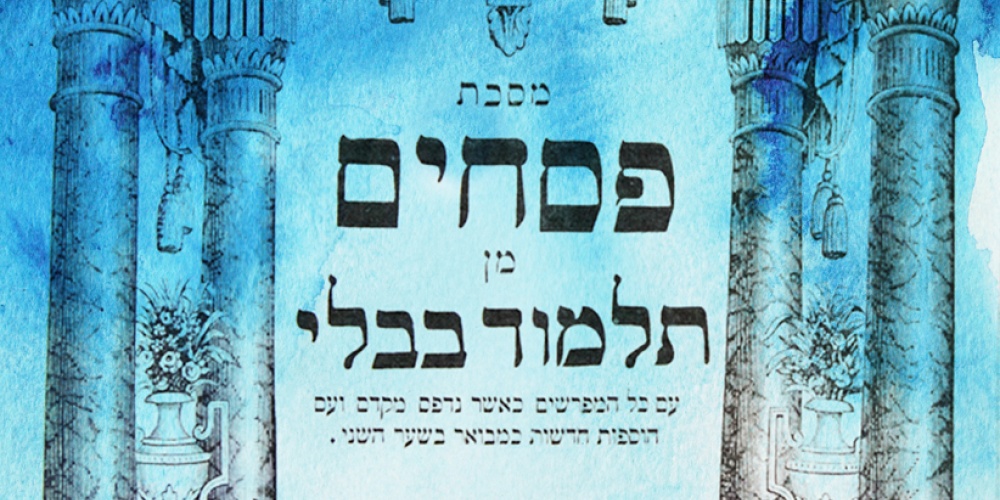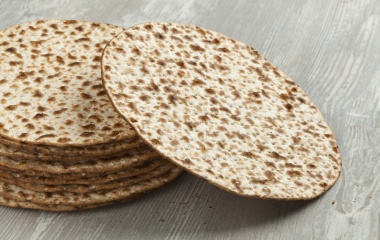
In one of his teshuva derashot, Rav Soloveitchik lamented the fact that, while there are many shomer Shabbat Jews in America, there are very few “shomer erev Shabbat Jews”. Many, especially (but not only) in the winter months, make it home from work, or elsewhere, with little time to spare and rush to switch from a weekday mindset to a Shabbat one. All who have spent Shabbat in Israel know what it means to observe erev Shabbat.
Important as preparing properly for Shabbat may be, neither erev Shabbat nor erev Yom Tov have any special status. The day has no special kedusha. Such is not the case regarding erev Pesach[1], which has a semi-Yom Tov status beginning at midday. Thus, one who is, r”l, sitting shiva would end their shiva at chatzot, midday, on the 14th of Nissan. It is at mid-day that the biblical prohibition to eat chametz (though without the accompanying punishment of karet) begins.
What distinguishes erev Pesach as a Yom Tov is that it is the time the korban pesach is to be brought. As the Tosafists note (Pesachim 50a, s.v. makom), any day one brings a korban is considered a personal Yom Tov and hence, work is not permitted. With everyone required to bring a korban pesach on the afternoon of the 14th of Nissan, all are forbidden from doing melacha[2] from mid-day onwards[3]. The Tosafists assume that this is a Biblical law and that it applies nowadays, even in the absence of the Temple and the korban pesach[4].
But law alone can never fully express the values of a society. For this we need minhag, practices emanating from and reflecting the deep religious yearning of the nation. These practices may not be formally mandated but reflect, in ways obedience to formal laws cannot, our attitude towards mitzvot. Taking one’s time preparing to greet the Shabbat queen is likely a greater indicator of the importance of Shabbat than refraining from melacha. Wearing a kippa tells us more about our pride in our Jewishness than does donning the required tefillin. Waiting six, three or even one hour between meat and milk reflects our dedication to kashrut more than avoiding treif meat. If mitzvot are the imposed will of G-d that we must do, like it or not, minhag is the voluntary contribution of man to enhancing one’s religious experience.
“In a place where the custom is to perform melacha on erev Pesach until mid-day, one may do so. In a place where the custom is not to perform melacha, one may not do so” (Pesachim 50a).
While working during the morning of erev Pesach (but not the afternoon) is permitted, with so much to do, many communities adopted the practice of refraining from work even in the morning. Others could not, or did not, adopt this practice, one that, for those working in the Diaspora and already taking two days off for Yom Tov, might be quite difficult.
In the hierarchy of mitzvot, minhag, by definition, is the least important category, less important than the various categories of biblical and rabbinic law. Yet sadly, it is often in the area of minhag where people have the most intense disputes. And when those disputes become personal, leading to hard feelings, one has violated the biblical command to avoid strife. How ironic and silly. Lucky is the regular shul-goer (may that soon be safe for all to do) who has not witnessed hard feelings engendered over a debate as to whether we should say tachanun, or vayhei noam, or a fight over the correct time to daven maariv. It is not without reason that Rabbeinu Tam notes that minhag spelled backwards is gehenom. The path to gehenom is paved with fights about minhagim. Thus, the very Mishna that teaches the importance of minhag also teaches that “one should not deviate [from the communal practice] and cause a machloket”.
As much of minhag is local, and with people travelling for Pesach common even in Talmudic times, it was inevitable that the minhag of one’s hometown would, on occasion, conflict with the minhagim of one’s locale for Pesach. The Mishna rules that theoretically, one should maintain the customs of both places. Until one actually makes a permanent move to a new location, one must keep the minhagim of one’s city of origin. At the same time, it is most disrespectful—and a potential source of great machloket—if one ignores the minhagim of one's temporary abode. When in Rome, do like the Romans. If in one’s home city, the custom is to allow work during the morning of erev Pesach, one is forbidden from following that practice when one travels to a city where the custom is not to work.
Similarly, if one goes from a place where the custom is not to work to a place where people do work, one would not be allowed to work. Since one lives in a community where the minhag is not to work, one may not work. But what about the minhag to work where one is spending Pesach? Being allowed to work is not the same as being obligated to work. As Rava notes, when people see someone not working, “they will say: See how many idle people there are in the marketplace!” (Pesachim 51b). Not working is no violation of the local custom.
However, if one’s idleness would, in fact, be seen as a rejection of local custom, thereby creating tension, one would be obligated to work, despite one’s regular minhag not to work. Minhag may be important, but pales in comparison to preserving peace. This is something we must keep in mind the next time we are somewhere where the minhag differs from our own.
[1] The 9th of Tishrei also has a semi-Yom Tov status, but not because it’s erev Yom Kippur. Rather, the Torah itself notes that “Yom Kippur” begins on the “evening of the 9th” of Tishrei, so that Yom Kippur is actually a two-day holiday. The 9th is the day to celebrate the receiving of the Torah, and the 10th to commemorate G-d’s forgiveness of the sin of the golden calf. Torah is celebrated by feasting, whereas pleading for forgiveness requires fasting.
[2] The definition of melacha for erev Pesach—and chol hamoed—is not the same as Shabbat or Yom Tov. While it is not always easy to precisely define its parameters, it is more akin to what we call work, a term all too often used incorrectly to define melacha on Shabbat.
[3] In a fascinating discussion worthy of much contemplation, the Tosafists wonder how one can ever work. After all, the korban tamid, the daily offering, is brought on our behalf each and every day, making every day a Yom Tov. It must be, the Tosafists answer, “that the korban tamid is different” and is not included in the prohibition to work on the day a korban is brought. Since the Torah says, “veasafta deganecha, you shall gather in your grain, if all of Israel yoshvim ub’teileem, sit and do nothing [i.e. do not work], who will gather our grain?”
[4] During the 19th century, as the return to Zion intensified, there was much halachic discussion about the possibility of bringing korbanot even in the absence of a Temple. Much of the discussion focused on the korban pesach which, for a variety of reasons beyond the scope of this devar Torah, was the korban that presented the fewest halachic challenges—challenges which some authorities ruled could be overcome.



